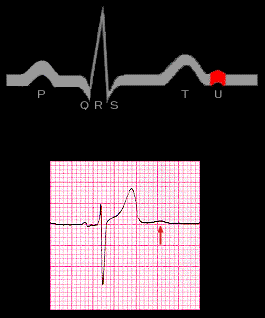
The U wave (arrow) occurs within or immediately after the T wave. It is a low amplitude upright (or positive) wave with a duration of 100 to 200 ms that is best seen in the mid-precordial leads (leads V3 and V4). It is frequently not visible in the limb leads. The U wave becomes more obvious at slower rates. Indeed, at rates above 100/min, it may not be discernible in any lead. The etiology of the U wave is unclear. It has been suggested that it may relate to ventricular or Purkinje fiber repolarization. However, the most favored hypothesis is that it is a mechano-electrical event linked to ventricular relaxation.
